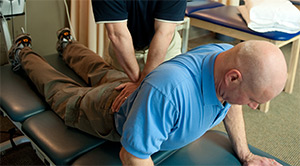
Learn about nonsurgical options to get you back to your everyday activities.
NOTICE: Our main Austin clinic location has moved to 1004 West 32nd Street. Click here for a map.
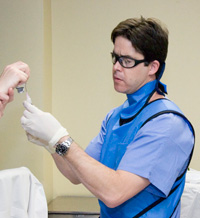 Injection therapy is intended to be a means to an end. The goal is to provide the patient with enough pain relief to bridge from inactivity to physical therapy, where back problems can be better treated with special exercises. For years, spine physicians have used cortisone injections, epidural steroid injections, trigger point injections and nerve blocks to relieve pain in the spine.
Injection therapy is intended to be a means to an end. The goal is to provide the patient with enough pain relief to bridge from inactivity to physical therapy, where back problems can be better treated with special exercises. For years, spine physicians have used cortisone injections, epidural steroid injections, trigger point injections and nerve blocks to relieve pain in the spine.
Epidural injections of cortisone may reduce the inflammation and/or swelling of the nerves in the epidural space resulting in decreased pain, tingling and numbness. The procedure involves inserting a needle of a long lasting steroid (cortisone) through the skin and deeper tissues into the epidural space. The epidural space is the area surrounding the spinal cord and the nerves coming out of it. One or more injections may be needed to relieve symptoms.
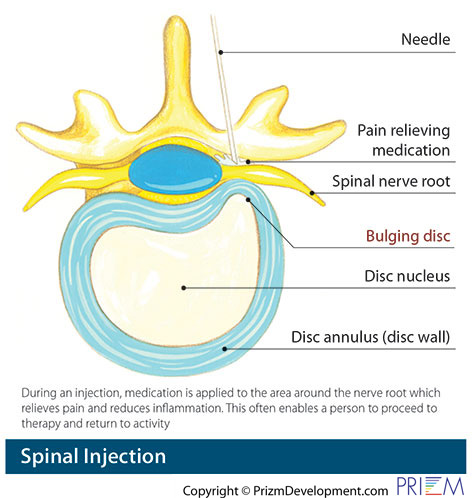 Facet Injection
Facet InjectionThe facet joints act as the hinges in our back, connecting all the vertebral bones in our back yet still allowing us to bend and twist with ease. The illustration above shows a facet injection in progress.
Sometimes from injury or age, these joints can become irritated or they can develop bone spurs, which makes movement painful. To relieve pain symptoms and restore range of motion, the spine physician may inject medication into the facet joint. The medicine in a way can act like WD40 on a rusty door hinge, restoring movement. Typically injections are done as a way to bridge the patient to therapy so the therapist can help the patient retain mobility after the effects of the medication wear off.
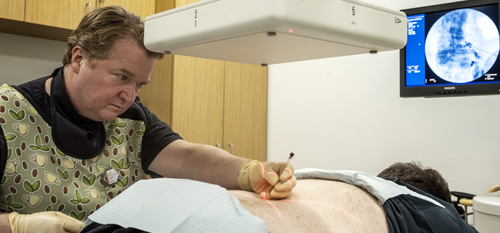 Trigger Point Injections
Trigger Point InjectionsTrigger points are painful tissues in and around muscles. Pressure can cause an aching or sharp pain sensation. Trigger point injections are the administration of a local anesthetic and steroid medication in the muscles where pain is occurring. The injection may relieve spasms of the muscle and may last from weeks to months.
A long lasting steroid (cortisone) is injected into the sacro-iliac joint to help decrease inflammation and/or swelling of tissue in the joint space. As a result, patients may experience reduced pain and other symptoms caused by inflammation of the joint. The sacro-iliac joint is located in the low back area. The procedure involves inserting a needle through the skin and deeper tissues into the SI joint. More than one injection may be needed for symptom relief.
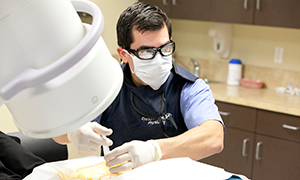 Rhizotomy
RhizotomyRhizotomy is where the physician may use heat or cold to intentionally damage the ability of a problematic nerve to telegraph pain signals to the brain.
[Top]
It can be difficult to determine the exact cause or source of ongoing chronic low back pain lasting more than 6 months. One potential cause of chronic low back pain may be tied to the basivertebral nerve. The basivertebral nerve is actually found within the vertebral bone in the low back.
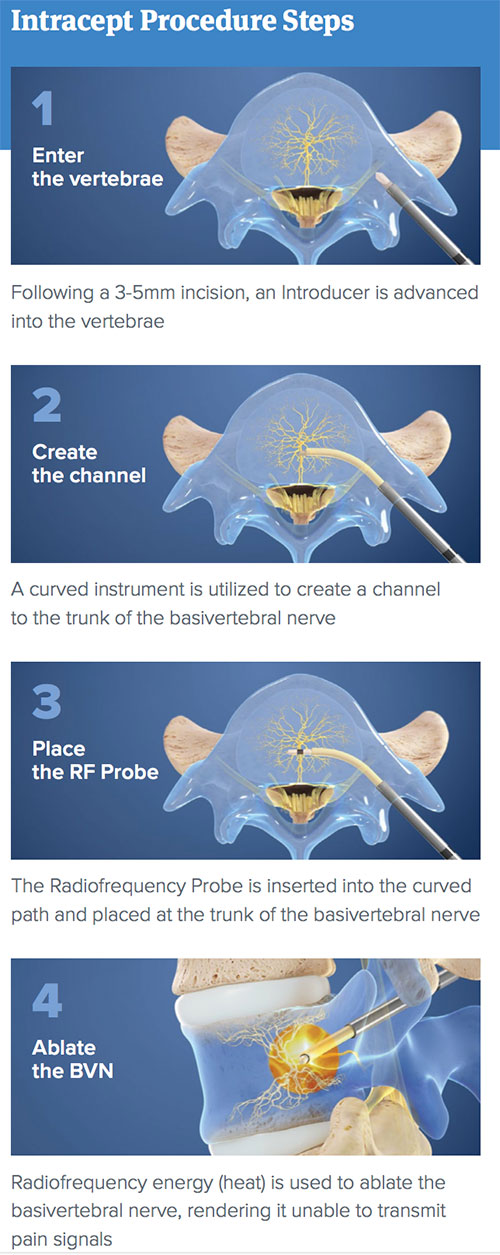
A new outpatient procedure provided by Texas Spine and Scoliosis is the Intracept Procedure, which is intended to intracept — and interrupt — the transmission of pain signals from the internal nerve inside the vertebral bone to the spinal cord and the brain.
The branches of the basivertebral nerve extend from the center of the boney vertebrae to the upper and lower surfaces of the vertebrae. With age and degeneration of the spine, additional stress can be placed on the vertebrae which can put pressure on the basivertebral nerve — leading to chronic low back pain. For those with chronic pain, this basivertebral nerve can be stuck in the ON position, continually sending pain signals to the brain.
With the Intracept procedure, the physician makes a 3mm to 5mm incision in the low back and a radiofrequency probe is then inserted to access the center of the vertebrae at the trunk of the basivertebral nerve. Heat is applied through the probe desensitizing the nerve making it unable to transmit a pain signal. Texas Spine and Scoliosis is one of the first spine centers in the State of Texas to provide this new procedure.
This procedure only relates to those people with chronic low back pain for more than 6 months and have not received adequate relief through other conservative care options for at least 6 months.
The average time for The Intracept Procedures is about 1 hour and 20 minutes. The procedure is typically done in an operating room in the hospital or an Ambulatory Surgery Center, with the patient going home later the same day.
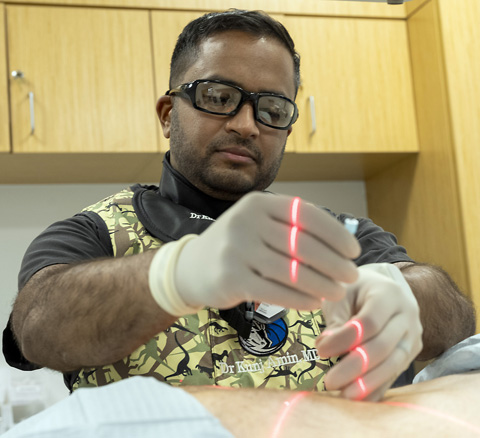
Relievant Medsystems, which is the company that developed the Intracept Procedure, sponsored three clinical trials enrolling approximately 400 patients that demonstrated the safety and effectiveness of the Intracept Procedure. Pain scores improved 53% over 24 months for those receiving the procedure.
Dr. Eeric Truumees, Dr. Enrique Pena and Dr. Eric Mayer at Texas Spine & Scoliosis are proficient in the Intracept procedure. Appointments and more information available at: 512-324-3580
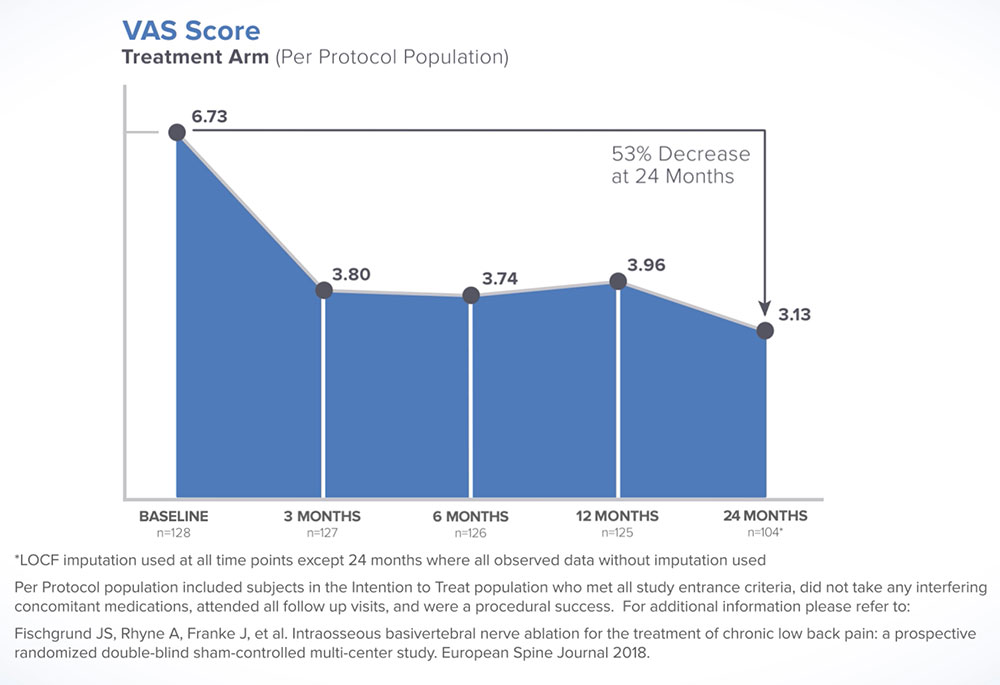
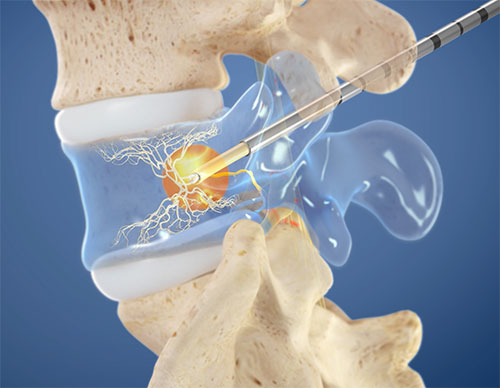
Learn about surgical and nonsurgical treatment options.

Learn about nonsurgical options to get you back to your everyday activities.
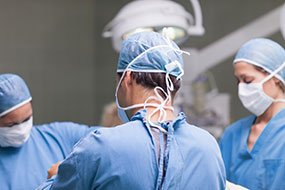
Learn about various surgical procedures performed by Ascension Texas Spine & Scoliosis.
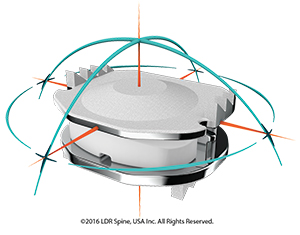
The artificial disc concept is intended to be an alternative for spinal fusion surgery.